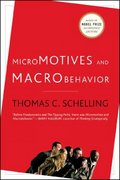Question
10 . Which of the following is least likely to be an example of monopolistic competition A) lettuce farmers B) fast-food restaurants C) convenience stores
10. Which of the following is least likely to be an example of monopolistic competition
A) lettuce farmers B) fast-food restaurants C) convenience stores D) gasoline stations
11. Which of the following is NOT characteristic of a perfectly competitive market
A) firms are price takers B) a significant degree of brand loyalty for each firm C) low barriers to entry D) many firms
12. A perfectly competitive firm currently sells 30,000 cartons of eggs at $1.25 each. If the firm wants to sell one more carton of eggs, the firm
A) should raise its price above $1.25. B) cannot sell an additional carton at any price because there are other egg farmers in the market. C) must sell the carton for less than $1.25. D) should price the carton at $1.25.
13. If price equals average total cost AND marginal cost then
A) producers will want to increase output. B) new firms will enter the market. C) economic profits would be zero. D) the firm would be operating at a loss
14. Obstacles that make it difficult or impossible for additional producers to begin producing or selling in a new market are referred to as
A) barriers to exit. B) barriers to entry. C) barriers to competition. D) blockades to exit.
15. For a firm, the price of a product is $10, and marginal revenue equals marginal cost at $7 and a quantity of 400 lbs. If the firm's profit at that level of production is $800, find the average total cost.
A) $7 B) $8 C) $9 D) $10
16. The opportunity cost of working is the
A) wage rate plus the value of fringe benefits earned in the process. B) wage rate earned in the process, but not the fringe benefits. C) personal satisfaction gained from working. D) value of leisure time that is given up in the process
17. Which of the following does NOT affect labor demand? (
A) the marginal revenue product of the last worker hired B) the productivity of workers C) the demand for the products that labor produces D) the supply of labor
Step by Step Solution
There are 3 Steps involved in it
Step: 1

Get Instant Access to Expert-Tailored Solutions
See step-by-step solutions with expert insights and AI powered tools for academic success
Step: 2

Step: 3

Ace Your Homework with AI
Get the answers you need in no time with our AI-driven, step-by-step assistance
Get Started


